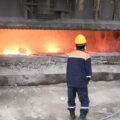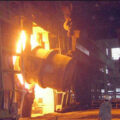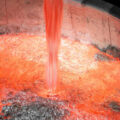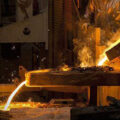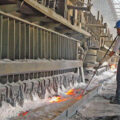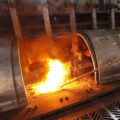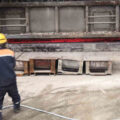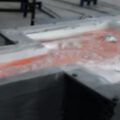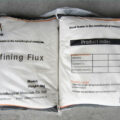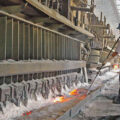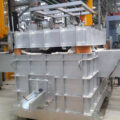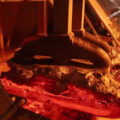The aluminum liquid removed from the aluminum electrolytic cell contains many impurities, which not only affects the casting and processing performance of metal aluminum, but also affects the quality of the product. In addition to the accompanying metal impurity elements accompanying aluminum precipitation during the electrolysis process, there are non-metal solid impurities (such as oxides, carbides, nitrides, etc.) and dissolved gases (such as H2, CO2, CO, CH4). 100g of aluminum liquid dissolves about 0.2-0.4cm3 of hydrogen at a temperature of 1273K. So, before aluminum casting, the aluminum foundry should adopt the aluminium melt purification method.
There are two forms of hydrogen in the aluminum liquid, namely atomic hydrogen and gaseous hydrogen. The former is dissolved in the aluminum liquid, and the latter is usually adsorbed on the solid inclusion particles and must be removed before casting the ingot. When the original aluminum liquid is directly cast into various billets, the requirements for the purification of the molten aluminum are more stringent, because the pores and slag inclusions in the billet will directly become the defects of the processed products.
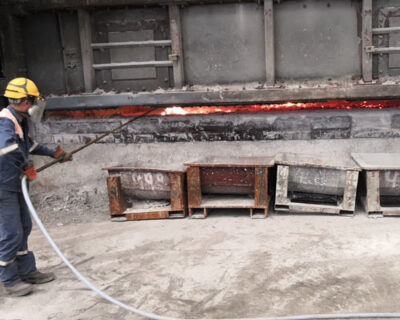
Aluminium Melt Purification Method
Methods Aluminium liquid purification commonly used CFF filter purification method and gas purification method by online degassing unit, or a combination of the two continuous purification method outside the furnace. In addition, there are those that use flux purification.
Filtration and purification method: a method of purifying non-metallic inclusions in aluminum liquid with a filter medium. The filter medium may be corundum balls, foamed ceramic sheets, microporous ceramic tubes, carbon layers, and silicate silk cotton filters made at high temperature.
The gas purification method is a purification method in which bubbles of inert gas or active gas are passed into the aluminum liquid to dissolve the dissolved gas. Inert gases such as nitrogen and argon can be used, as can active gases such as chlorine, carbon tetrachloride, and hexachloroethane. When using chlorine gas, the chlorine bubbles will form dispersed aluminum chloride bubbles through the aluminum liquid, trap the suspended solid inclusions adsorbed with hydrogen, and then float to the surface of the aluminum liquid to be removed. At the same time, metal impurities such as lithium, potassium, calcium, sodium and magnesium contained in the aluminum liquid can be removed due to chlorination.
However, chlorine is corrosive and causes aluminum loss and environmental pollution, so it is mostly used in combination with nitrogen. The chlorine content is generally 3% to 6% (volume fraction). In addition, in order to reduce the amount of aluminum chloride discharged into the atmosphere, the method of spreading chloride flux on the aluminum surface can be used to reduce the sodium content in aluminum to less than 0.001%. This low-content sodium liquid can be used for production Aluminum-magnesium deformation alloy.
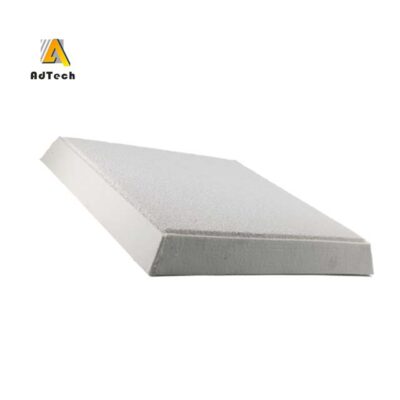
Filtration and Gas Purification
The method of combining the continuous purification method outside the furnace with filtration and gas purification. The aluminum liquid is continuously fed into the purification device, under the protection of the flux covering layer, and flushed with nitrogen (or mixed gas). Then through the corundum ball filter layer, the purified aluminum liquid is discharged from the outlet. The advantage of this method is that it can continuously purify aluminum liquid (200-600kg per minute), nitrogen has no pollution to the environment, and has a better purification effect, and the hydrogen removal rate can reach 30%-40%.
The flux purification method can be used in a small-scale aluminum casting factory or workshop for refining with nitrogen-chlorine mixed gas in the melting furnace, or refining agent and flux refining in the furnace. When casting outside, the inclusions are removed through the filter screen, and the effect is also very good. The flux used is generally a mixture of sodium nitrate and graphite, which utilizes the thermal decomposition of sodium nitrate and the reaction with aluminum to form nitrogen oxides or nitrogen gas to achieve the purpose of removing gas impurities.


